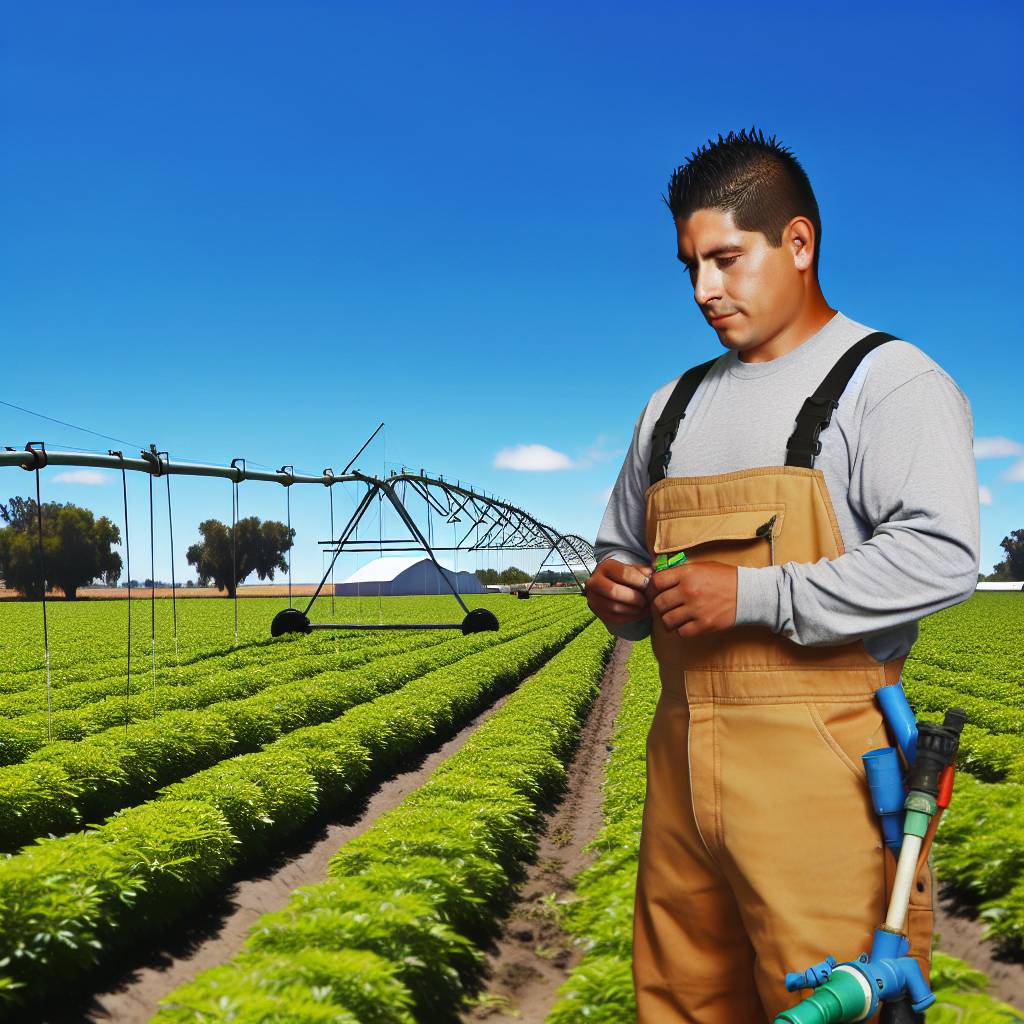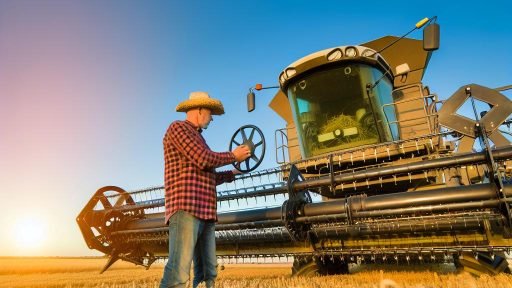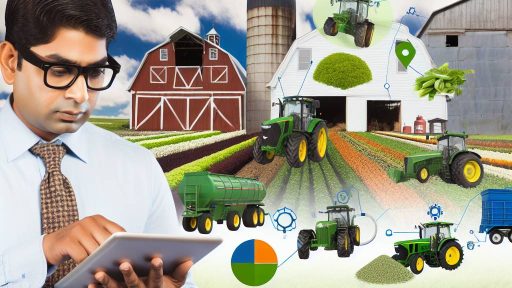Introduction to Greenhouse Technologies and Their Role in Sustainable Agriculture
Greenhouse technologies play a significant role in modern agriculture.
They enhance crop production while promoting sustainability.
These environments allow for controlled growing conditions.
Therefore, farmers can optimize water, light, and nutrients.
The Purpose of Greenhouses
Greenhouses provide protection against extreme weather.
They also guard crops from pests and diseases.
This protection leads to higher yields and better quality produce.
As a result, farmers can grow a variety of crops year-round.
Benefits of Sustainable Practices
Sustainable practices reduce the environmental impact of farming.
Using greenhouses minimizes land usage compared to traditional methods.
This approach promotes biodiversity and soil health.
Consequently, it allows for better resource management.
Technological Advancements in Greenhouses
Recent advancements have made modern greenhouses more efficient.
For instance, sensors monitor temperature and humidity levels.
These smart systems help optimize growing conditions automatically.
Transform Your Agribusiness
Unlock your farm's potential with expert advice tailored to your needs. Get actionable steps that drive real results.
Get StartedEnergy-efficient technologies also reduce carbon footprints.
Community and Economic Impacts
Greenhouses contribute positively to local economies.
They create jobs in agricultural sectors and related industries.
Moreover, they provide fresh produce to communities.
This accessibility enhances food security for many families.
Types of Greenhouse Structures and Their Benefits for Crop Production
Introduction to Greenhouse Structures
Greenhouses play a crucial role in modern agriculture.
They create controlled environments for plant growth.
Various types of greenhouse structures exist, each with unique benefits.
Polycarbonate Greenhouses
Polycarbonate greenhouses provide excellent insulation.
They allow light penetration while reducing energy costs.
This structure withstands harsh weather conditions effectively.
Additionally, polycarbonate materials are durable and long-lasting.
Farmers enjoy the consistent growing conditions they provide.
Glass Greenhouses
Glass greenhouses are perfect for maximizing light exposure.
They create a bright environment for photosynthesis.
This type enhances temperature regulation during winter months.
Furthermore, glass structures offer aesthetic appeal.
Farmers often choose them for commercial growing operations.
Tunnel Greenhouses
Tunnel greenhouses, also known as hoop houses, are economical.
They are easy to set up and maintain.
This structure provides flexibility for seasonal crops.
Farmers can also extend growing seasons effectively.
Tunnel greenhouses enhance air circulation, benefiting plant health.
Benefits of Using Greenhouse Technologies
Greenhouse technologies support sustainable agricultural practices.
Showcase Your Farming Business
Publish your professional farming services profile on our blog for a one-time fee of $200 and reach a dedicated audience of farmers and agribusiness owners.
Publish Your ProfileThey reduce water usage through efficient irrigation systems.
Pest and disease management becomes more manageable inside greenhouses.
Furthermore, controlled conditions lead to higher crop yields.
Farmers can optimize their production year-round.
Choosing the Right Structure
Selecting the right greenhouse structure depends on several factors.
Consider your climate conditions before choosing a design.
Your budget will also influence your decision significantly.
Evaluate the types of crops you intend to grow.
Finally, assess the available land space to optimize your setup.
Innovative Climate Control Systems for Enhanced Crop Growth and Resource Efficiency
Introduction to Climate Control Technologies
Climate control technologies play a crucial role in modern agriculture.
They regulate temperature, humidity, and light levels within greenhouses.
Consequently, they enhance crop growth and resource efficiency.
Farmers increasingly adopt these smart systems to optimize yields.
Benefits of Automated Climate Control Systems
Automated systems eliminate human error in climate management.
They provide consistent environmental conditions for crops.
As a result, plants can grow more uniformly and healthily.
In addition, these systems reduce water and energy usage.
Efficient resource use leads to lower operational costs.
Examples of Popular Automated Systems
- Hydroponic systems efficiently manage nutrient delivery.
- Thermal screens help retain heat during the night.
- Automated ventilation systems maintain optimal airflow.
Integration of IoT in Greenhouse Management
The Internet of Things (IoT) links devices for real-time monitoring.
Smart sensors measure temperature, humidity, and soil moisture.
Data collection allows for refined control of greenhouse conditions.
Farmers can access information remotely via mobile apps.
This connectivity ensures timely responses to environmental changes.
Advantages of IoT Integration
- Immediate alerts for system malfunctions improve reliability.
- Historical data analysis aids in predicting trends.
- Data-driven decisions enhance overall productivity.
Future Trends in Climate Control Technologies
Research continues to improve climate control techniques.
Developments in AI promise to revolutionize predictive analytics.
Smart algorithms will offer insights into optimal growing conditions.
Moreover, new sensors will increase data accuracy and reliability.
Ultimately, these advancements will drive sustainable practices in agriculture.
Gain More Insights: Genetically Modified Crops: Myths Vs. Facts For Farmers
Hydroponics and Vertical Farming
Maximizing Space
Hydroponics allows farmers to grow crops without soil.
This method uses nutrient-rich water for plant growth.
As a result, it maximizes space efficiency.
Vertical farming utilizes vertical surfaces for crop cultivation.
This technique increases yield per square foot significantly.
Moreover, it makes farming possible in urban areas.
Reducing Water Usage
Hydroponics uses up to 90% less water than traditional farming.
Water recirculation systems maintain moisture levels effectively.
This helps to conserve valuable water resources.
Vertical farms also optimize water usage through management systems.
These systems monitor humidity and moisture levels closely.
Showcase Your Farming Business
Publish your professional farming services profile on our blog for a one-time fee of $200 and reach a dedicated audience of farmers and agribusiness owners.
Publish Your ProfileConsequently, they minimize waste and enhance sustainability.
Benefits of Hydroponics and Vertical Farming
Both methods offer numerous environmental benefits.
They reduce the dependency on harmful pesticides and fertilizers.
Additionally, indoor environments help eliminate pests naturally.
This leads to healthier, chemical-free produce for consumers.
Importantly, these technologies can be implemented globally.
As communities adopt these methods, local food systems improve.
Challenges and Considerations
Despite their advantages, both methods face challenges.
Initial setup costs can be high for hydroponics systems.
Moreover, technical knowledge is necessary for successful operation.
Vertical farming requires ongoing investment in technology.
However, the long-term benefits can outweigh these challenges.
To ensure success, careful planning and management are essential.
Explore Further: Implementing Smart Sensors for Crop Monitoring
Smart Greenhouse Automation
Introduction to IoT Solutions
Smart greenhouse automation leverages Internet of Things (IoT) technologies.
These technologies help farmers optimize their crop production effectively.
Moreover, they offer real-time monitoring of environmental conditions.
Farmers benefit from data-driven insights that enhance decision-making.
Advantages of Smart Greenhouses
Smart greenhouses provide numerous advantages for sustainable farming.
- They reduce water consumption through precise irrigation control.
- Energy efficiency improves with automated climate control systems.
- Crop yields increase due to optimal growing conditions.
IoT Technologies in Use
Several IoT devices enhance greenhouse management.
Sensors monitor temperature, humidity, and soil moisture levels.
Real-time data is transmitted to cloud-based platforms.
Farmers can access this information via mobile applications.
Automated Control Systems
Automated control systems adjust conditions inside the greenhouse.
For instance, they can open vents when temperatures rise.
Heating systems can activate during low temperature periods.
These adjustments take place without manual intervention.
Data Analytics for Improved Outcomes
Data analytics plays a crucial role in smart greenhouse automation.
Analysis of historical data helps in predicting future trends.
Consequently, farmers can plan crop cycles more effectively.
This leads to enhanced productivity and reduced waste.
Examples of Successful Implementations
Companies like AgriTech Solutions have successfully integrated IoT.
Their systems have shown significant improvements in yield and efficiency.
Another example is GreenGrow Innovations, which focuses on automated irrigation.
They reduce water usage while maintaining crop health and growth.
Delve into the Subject: A Comprehensive Guide to Controlled Environment Agriculture

Sustainable Pest and Disease Management Practices within Greenhouse Systems
Integrating Biological Controls
Biological control utilizes natural predators to manage pests effectively.
This method decreases reliance on chemical pesticides.
For instance, introducing ladybugs can help reduce aphid populations.
Moreover, beneficial nematodes target soil-dwelling pests without harming plants.
Showcase Your Farming Business
Publish your professional farming services profile on our blog for a one-time fee of $200 and reach a dedicated audience of farmers and agribusiness owners.
Publish Your ProfileUsing these natural allies promotes ecological balance within greenhouses.
Utilizing Smart Technology
Smart technology significantly enhances pest monitoring systems.
Automated sensors detect pest activity and trigger alerts.
These systems allow for timely intervention, reducing outbreaks.
Additionally, precision agriculture tools help optimize pesticide use.
This approach minimizes chemical exposure and environmental impact.
Implementing Cultural Practices
Cultural practices play a crucial role in sustainable pest management.
Crop rotation disrupts pest life cycles and improves soil health.
Diversifying plant species also helps prevent pest infestations.
Furthermore, maintaining proper hygiene in greenhouses reduces disease spread.
Practicing these methods fosters resilience in the agricultural system.
Promoting Organic Solutions
Organic pest control methods offer safer alternatives to chemicals.
Neem oil and insecticidal soaps effectively control pest populations.
These products are derived from natural sources and are biodegradable.
Using organic solutions aligns with sustainable agricultural principles.
Ultimately, this approach safeguards environmental health while promoting productivity.
Educating Growers on Integrated Pest Management
Education on Integrated Pest Management (IPM) is vital for growers.
IPM combines biological, cultural, and chemical tools for optimal pest control.
Training sessions promote awareness of sustainable practices.
As a result, growers can make informed decisions in pest management.
Incorporating IPM strategies leads to healthier crops and reduced risks.
Find Out More: Biotechnology In Agriculture Key Applications For Farmers
Energy Efficiency in Greenhouses: Utilizing Renewable Energy Sources
Importance of Energy Efficiency
Energy efficiency plays a crucial role in sustainable agriculture.
It reduces operational costs and minimizes carbon footprints.
Moreover, efficient energy use can enhance crop yields.
Solar Power Implementation
Integrating solar panels into greenhouse designs significantly boosts sustainability.
Solar energy can power lighting and heating systems.
In addition, it decreases reliance on non-renewable energy sources.
Types of Solar Systems
- Photovoltaic systems convert sunlight into electricity.
- Solar thermal systems provide heating for plants.
These systems ensure optimal environmental conditions for crops.
Wind Energy Utilization
Wind turbines contribute to energy efficiency in greenhouses.
They generate electricity to power essential greenhouse operations.
Furthermore, wind energy can enhance overall greenhouse resilience.
Benefits of Wind Energy
Wind energy reduces greenhouse gas emissions.
It also leads to significant long-term cost savings.
Additionally, wind installations can create local job opportunities.
Biomass as a Renewable Source
Biomass systems offer alternative energy solutions for greenhouses.
Utilizing organic waste products can generate heat energy.
This approach ensures sustainable disposal of agricultural residues.
Types of Biomass Resources
- Agricultural waste such as crop residues.
- Dedicated energy crops like switchgrass.
- Animal waste from livestock operations.
Using these resources promotes a circular economy in farming.
Energy Storage Technologies
Effective energy storage is crucial for maximizing renewable resources.
Showcase Your Farming Business
Publish your professional farming services profile on our blog for a one-time fee of $200 and reach a dedicated audience of farmers and agribusiness owners.
Publish Your ProfileBattery storage systems enable energy use during peak demand.
They help stabilize energy supply and reduce waste.
Integrating Smart Technologies
Smart meters and IoT devices enhance energy efficiency monitoring in greenhouses.
Such technologies provide real-time data on energy consumption.
They enable informed decision-making for energy management.
Renewable Energy Integration in Greenhouses
Integrating renewable energy sources into greenhouses is highly beneficial.
It enhances efficiency while contributing to sustainability.
Moreover, these technologies can improve crop production and farmer profitability.
Case Studies: Successful Implementation of Greenhouse Technologies in Sustainable Farming
Innovative Greenhouses in Brazil
Agricultura Futuro successfully implemented high-tech greenhouses.
These greenhouses utilize hydroponic systems to grow tomatoes.
This approach reduces water usage by 40% compared to traditional methods.
Consequently, production costs decrease while yield increases.
Farmers in the region celebrate enhanced crop quality and sustainability.
Vertical Farms in Japan
Shimizu Corporation established a vertical farm in Tokyo.
This facility employs cutting-edge LED technology for plant growth.
As a result, they produce vegetables year-round, regardless of weather.
Community members benefit from fresh produce delivered directly.
Moreover, this model reduces transportation emissions significantly.
Solar-Powered Greenhouses in Spain
Greenhouse Innovations implemented solar-powered greenhouses in Andalusia.
These structures harness solar energy to power irrigation systems.
This transition allows farmers to minimize reliance on fossil fuels.
Overall, energy costs drop while productivity remains high.
Additionally, this approach demonstrates how renewable resources can support agriculture.
Community Supported Agriculture in Canada
Eco-Green Farms partnered with local communities in Ontario.
Their greenhouses operate under a community-supported agriculture model.
Members receive weekly deliveries of fresh produce directly from the farm.
This model promotes local economies and reduces food miles.
Furthermore, it fosters strong connections between farmers and consumers.
Lessons Learned from Global Case Studies
Successful greenhouse technologies showcase numerous benefits.
They improve water efficiency and reduce energy consumption.
Additionally, these innovations enhance food security and local economies.
Thus, adopting sustainable practices helps combat climate change.
These case studies inspire further advancements in sustainable agriculture.
Additional Resources
Advancing climate resilience: technological innovations in plant …
USDA Science and Research Strategy, 2023-2026: Cultivating …




